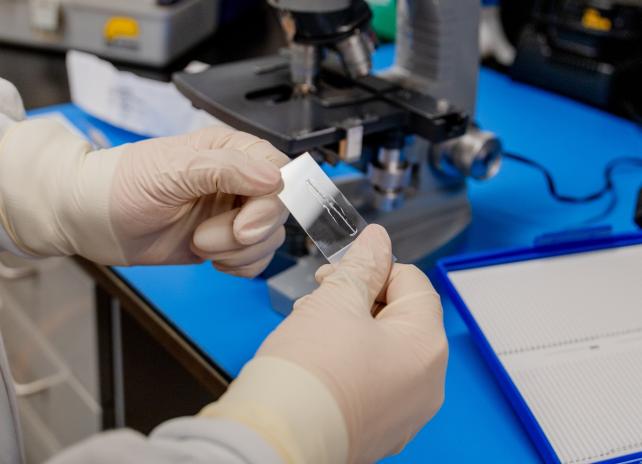Introduction
For more than 50 years, the Wyoming Game and Fish Wildlife Forensic and Fish Health Laboratory in Laramie has provided top-notch services to the Department and other state and federal agencies. The main focus of the laboratory is fish health and wildlife forensics. Additional duties include aging of big game teeth using a technique called cementum annuli analysis. The laboratory is one of the few state laboratories in the country that is both a full service fish health and wildlife forensic laboratory.
Wildlife disease testing, including Chronic Wasting Disease and Brucellosis testing, is hosted in the Game and Fish Wildlife Health Lab.
Game and Fish Lab
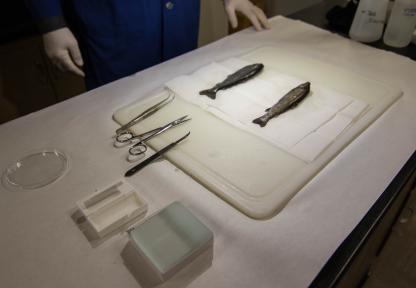
Fish Health
The Fish Health Lab conducts annual fish health inspections to determine the disease status of fish populations in wild broodstocks and fish culture facilities. The success of the disease prevention program in Wyoming is known nationally and is attributed to a sound fish health policy, rapid diagnoses, and treatment. Diseases tested for include whirling, coldwater, bacterial gill, bacterial kidney, enteric red-mouth, and more.
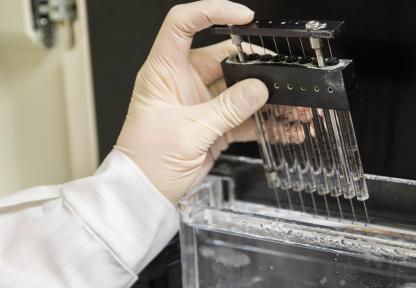
Forensics
The Forensics lab is used to assist law enforcement personnel with enforcing hunting laws. Evidence collected during wildlife crime cases is analyzed to help link the suspect, victim (poached animal), and the crime scene. The Wyoming Game and Fish Forensics Laboratory is one of the most advanced forensics labs in the country, and is locally and nationally recognized for its use of DNA analyses.
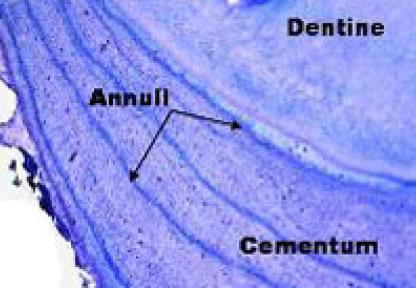
Tooth Aging
The Tooth Aging Lab ages teeth from antelope, elk, deer, moose, black bear, mountain lion, bison, and bobcat. Knowing the age demographics of wildlife populations aids in their management by informing models used to understand population trends. Hunters may have teeth collected from their harvested animals at hunter check stations, and resulting age data can be accessed online.
Accreditation
The Wildlife Forensic and Fish Health Laboratory is accredited to ISO/IEC 17025: 2017 by the American National Standards Institute National Accreditation Board (ANAB) for biological testing and forensic testing, certificate number AT-2947.
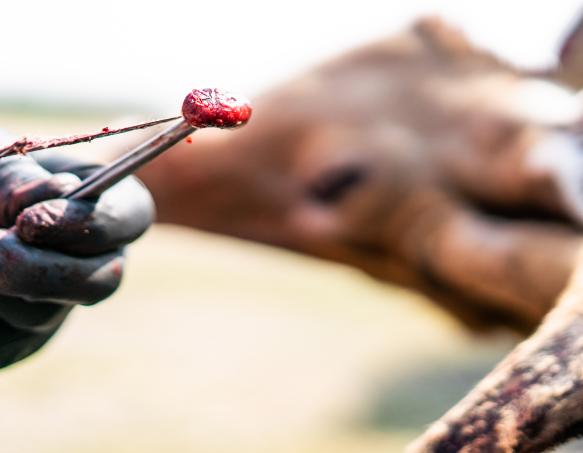
Hunter check stations collect wildlife samples
Hunter check stations serve several important roles. The main purpose of check stations is to collect biological data such as age, gender, and health data from harvested animals. Various blood, tissue, and teeth samples may also be taken with the hunter's permission. Blood and tissue samples (including CWD and Brucellosis) are analyzed at the Wildlife Health Lab to determine the prevalence of wildlife diseases. Teeth samples are analyzed in the Tooth Aging Lab to determine the age of harvested animals. All these data are used by wildlife managers to make decisions about future hunting seasons and other management actions.
Questions?
Contact the Fish Health and Forensics Lab at (307) 721-1922
For questions about CWD or Brucellosis testing and results, contact the Wildlife Health Lab at (307) 745-5865

